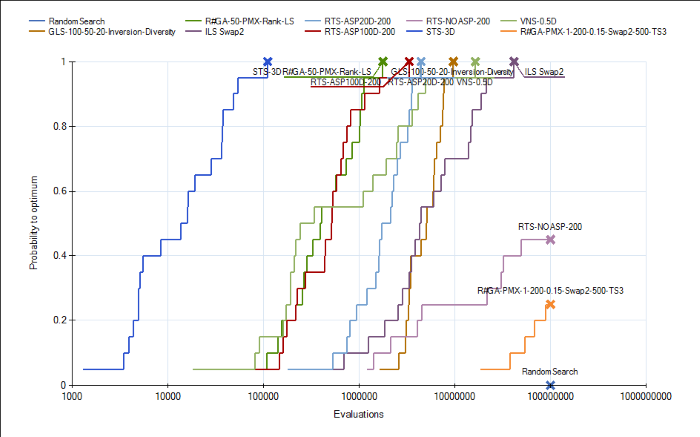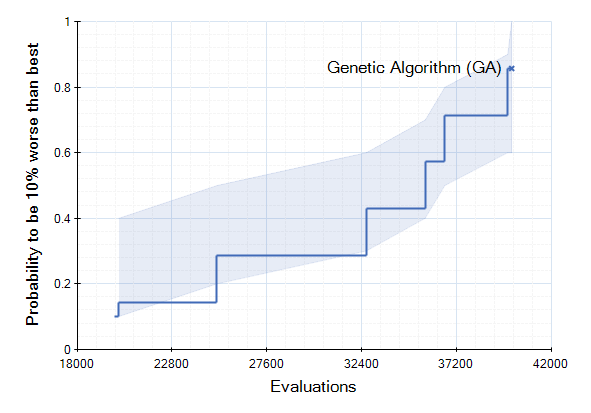HeuristicLab 3.3.14 "Denver" Release
We are happy to announce the release of HeuristicLab 3.3.14, which we finished at this year's Genetic and Evolutionary Computation Conference (GECCO) in Denver, CO, USA.
HeuristicLab 3.3.14 "Denver" contains the following new features:
- New problems:
- Bin Packing
- Probabilistic TSP
- Multi-Objective Testfunctions
- New data analysis algorithms:
- Gradient Boosted Regression
- Nonlinear Regression
- Elastic-Net
- Gradient Charts
For a full list of all changes have a look at the ChangeLog.
Go to the Download page or click on the image below to get HeuristicLab 3.3.14 "Denver" now!

Run-Length Distribution Analysis with HeuristicLab
We have included in our trunk today new analyzers for measuring algorithm performance. The analyzers are called QualityPerEvaluationsAnalyzer and QualityPerClockAnalyzer. They record the convergence graph in each run and add it as a result. A new run analyzer called "Run-length Distribution View" can be used to build, so called, ECDFs out of the convergence graphs in the individual runs using a single or multiple targets. This allows plotting the cumulative success probability of reaching a certain fitness value given a certain effort (measured in evaluated solutions or elapsed wall-clock time). These plots can be used to compare the run-length distributions of algorithm instances applied to one or many problem instances.
The run-length distribution view can cope with runs of different length such that it would not simple plot the number of hits divided by the total number of runs in the experiment. Instead, the denominator is decreased whenever a run missed the target and terminated prematurly. Thus one can use shorter runs to obtain more accurate ECDFs for lower amounts of function evaluations. In order to visualize missed runs, we plot a shaded area for every curve that represents the min and max bounds for the ECDF. The minimum level is pessimistic and assumes that all prematurely missed runs would have not hit the target later on. The upper level is optimistic and assumes that all prematurely missed runs would have immediately found the target right afterwards. The line that is based purely on the observed hits is thus in-between these two.
Together with the other run analyzers this one provides another means for algorithm developers to test and compare their instances. Currently, this feature is part of the main development trunk.

 rss
rss

